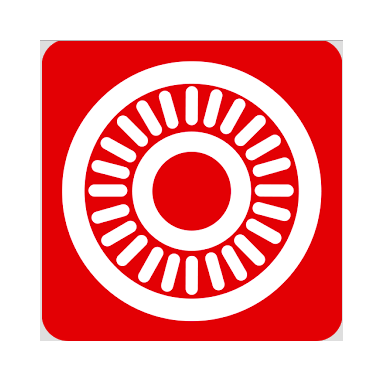CDC Motorbike Practical Lesson 3: Slope
CDC Motorbike Practical Lesson 3 will be on Slope, S Course (also known as Figure of 8) and Crank Course. For the best result, do read this post before you attempt CDC Practical Lesson 3 so that you can be prepared for the lesson. This will increase your chance of passing this lesson as compared to attending CDC Practical Lesson 3 unprepared.
The first course will be the Slope whereby you have to move off from stationary position on the slope without rolling back or stalling engine. There is no time requirement for slope course but do not take your own sweet time to complete the course. The slope consists of two sides which can be occupied. 4 riders can occupy the slope at the same time. Two riders will be before the line on the slope while the other two riders will be at the foot of the slope waiting. Before going to the slope, your right signal is on as you will be turning right to the slope.
While you are turning right to the slope, you have to decide which side of the slope to head to. While turning, you have to decide which side of the slope to head to and then signal toward the side of the slope you are heading. Always occupy the left side first if possible.
For example, If you are going to left side of the slope, then you will have to signal left when you are nearing the slope and must be in gear two when moving up the slope before the line. If you are going to right side of the slope, then you will have to signal right when you are nearing the slope and must be in gear two when moving up the slope before the line.
If you are waiting at the foot of the slope, then you should move up the slope using gear one. Remember if you are on the right side of the slope foot, you have to check back left instead of check back right.
Throttle slightly harder before you hit the slope so that you have enough momentum to head up to the slope. I suggest clutching in while kicking your gear down to gear one so that you will free wheel up the slope. The bike will slow down by itself as it head up the slope. To stop completely, press both front and rear brake. You should be able to stop smoothly this way without stalling the engine. Use both front and rear brake to stop the bike. After stopping, signal away from the kerb. Next, you have to release your front brake while holding onto your rear brake. Then you need to get the biking point of the bike by turning on the throttle. There are a few ways to gauge the biking point.
You can gauge by hearing the sound. When the bike is near biting point, then throttle sound will decrease as you slowly release the clutch. Or if you sense that the bike is moving forward while releasing clutch, then the bike is at biking point. However, I determine the biting point by looking at the tachometer. When the rpm starts to drop as you slowly release your clutch, then the biting point is reached. Hold the clutch at that point. The engine will stall if you continue to release more of the clutch.
After achieving biting point, do not release the rear brake suddenly. Release the rear brake slowly while turning on the throttle. If you sense that the bike is rolling back as there is not enough throttle is being applied, you can re-apply the rear brake again to prevent rolling back. If you do it correctly, the bike will not roll back when you have fully released the rear brake. To move off, you have to release more clutch and turn on the throttle at the same time. The motorbike will start to move off from the slope and i suggest that you lift your left foot slowly up instead of immediately when your bike start to move to prevent any wobbling or instability. If you lift up your leg too fast, then the bike may become unstable and the bike will move either to the right or left as you try to balance the bike by leaning left or right.
After your left leg is up, fully release the clutch when you are at the top of the slope and then signal left. As you are moving down the slope, depress both rear and front brake while keeping your left hand away from the clutch lever. Clutch in fully when you are near the stop line while applying both rear and front brake.
Remember not to inch out. Check back right and blindspot left regardless whether you are on the left or right side of the slope before turning left.
CDC Motorbike Practical Lesson 3: S Course
The S course (also known as figure of 8 course) has be clear within 11 seconds. Start off the figure of 8 by checking back right and then blindspot left. Your left signal should also be on. Accelerate hard and try to kick up to gear 2 before you cross the line. One common problem faced is that the gear went to neutral instead of gear two. One of the reason is because the gear is kicked up before the clutch lever is fully depressed due to being in a hurry to kick up to gear two. So, if you are having problem of kicking to neutral, remember to remind yourself to depress the clutch fully before kicking up. Please do note that it is also fine if you kick up to gear two after crossing the line.
After crossing the line, cancel your left signal. For beginner, I suggest maintain constant throttle while using rear brake to control the speed. By maintaining constant throttle, the ride will be smooth. Otherwise, the bike will be rocking front and back when the throttle is turned on and off due to engine braking. If the speed is too fast and you feel that you are losing control of the bike, tap your rear brake to slow down the speed.
However, when you have better control over the motorbike, then you can start to throttle on to speed up and throttle off to slow down by using engine brake. Using this method, you will not need to use your rear brake and the timing will be faster.
To achieve the required timing of 11 seconds, you have to bank left when turning left and bank right when turning right. The key is not be afraid of falling. When turning, you need to look ahead or where you are turning so that you can have a wider field of vision. If you look at the kerb, then most likely you will end up going to the kerb. Before exiting the figure of 8, you will need to signal left and be prepared for going to the crank course.
CDC Motorbike Practical Lesson 3: Crank Course
This should be the easiest courses among the 6 courses. You should be able to clear the course under 6 second. Start by check back right and then blindspot left. Next, accelerate hard and then kick up to gear 2 before you reach the line. One common problem faced is that the gear went to neutral instead of gear two. One of the reason is because the gear is kicked up before the clutch lever is fully depressed due to being in a hurry to kick up to gear two. So, if you are having problem of kicking to neutral, remember to remind yourself to depress the clutch fully before kicking up. Another point to take note is to look at the direction where you are going. Please do not look at the kerb as you will go toward the kerb if you do that.
Once you are in gear two, you can just ride thru crank course without any throttling. I would recommend turning the handle bar to turn left and right rather than banking left or right. Just before you exit from the crank course, please check your far right side to see if there is any bike or car turning left to enter the figure of 8. If there is any left turning car or bike, you have to stop after the line to give way to them. You also have to check if there is any right turning car exiting the car crank course directly opposite of the bike crank course. Then check back right and blindspot left before you move off after giving way.
If there is a queue for the figure of 8 that extend beyond the yellow box, then you will have to signal right once your front wheel touches the yellow box. Then you have to check your right mirror before checking your right blindspot. After that signal left, check left mirror and then left blindspot before changing to your left lane.
Lastly, do visit this post to learn more about other CDC practical lessons. You can also read this forumer detailed post for CDC Motorbike Practical Lesson 3. I have learnt much from his post when i am still a learner. Do share this post CDC Practical Lesson 3 if you have friends who are currently on CDC Practical Lesson 3.
Pls do try to complete all your theory lessons and tests as soon as possible to prevent any bottlenecking. Both theory and practical lesson can be cleared at the same time. Some learners progress were impeded as they are unable to book their next practical lesson due to not clearing their theory lessons and tests fast enough. Do visit this post to learn more about other CDC practical lessons.
As i am no longer learning in CDC, i might not be able to give the most updated information. Thus, i am forming a telegram group so that i can create a learner community to engage all CDC motorcycle learner whereby you all can share your learning experience and learn from each other. Do join the Telegram group by clicking here. The link is https://t.me/CDCMotorcycleLearner
Telegram is chosen instead of whatapp because it allows user to create username and hide your handphone number. Do consider to install telegram from google app store.
If you have any question or thing that you do not understand, you can contact via telegram or email. For faster response, please contact me via telegram or whatsapp. The QR code is the link to contact me via telegram. Telegram is messaging app for smartphone similar to whatapp.










Hi Arcane
I failed my Prac 3 at S Course due to engine stalled after I shifted to G2 . Maybe my throttle was not enough but of I throttle too much, I cannot turn well after that. Any advice pls?
Try to be on the right most side of the lane so that there is more distance between your bike and the S course. By positioning in such way, you also do not have to turn sharply into the S course. Then when you are ready to start the course, gather speed rapidly in G1 and kick up to G2 before entering the S course.
Maintain constant throttle and use rear brake to control speed. If you on off throttle, the bike will be rocking front and back.
You cannot turn well because you are looking at the wrong angle. You need to look wide. Cannot look at kerb. You look at kerb, you will go to kerb. The bike will go to whereever you are looking at.
Dear Arcane
Thanks for your blog.
I have been paying attention to instructions or advice from instructors and I am concerned about the apparently different instructions for handling particular situations. Eg. I was told to stay behind a Stationary car when we change lane after the corner where we enter the Plank course to go near the straight towards slope course. Another instructor told me to over take when a car near the directional change course is Stationary for whatever reason eg. Stalled engine, temporary stopped to go into the directional change car course.
If not giving way, it is immediate failure. I find that the way the instructors give advice or instruction is NOT IN SYNC.
Maybe after many years , there is different advice given by different instructors causing CONFUSION in students.
Another example is one instructor told us to hold the throttle for 6 seconds when moving off at the slope. Another say just move off. Another say, when at the top of the slope, hand fully on the rubber grip. Another say when at the top, hand must continue to rest on the clutch lever as we are at gear 1.
There are some more INCONSISTENCIES which I am too tired to mention.
Just sharing to benefit all.
Hope to hear some advice.
Thanks.
For your first question, you must first ascertain whether the stationary car is performing the directional change course. If it is performing directional change course, you can overtake the car. Otherwise, you should not overtake the car and should just wait behind the car. One hint is know whether the car is performing the directional change course is to look at the position of the car. If the car stops before the directional change course entry with left signal on, this car is entering the directional change course. If the car position is after the entry, then the car is not doing directional change course and you should not overtake the car.
If you are going to lesson 5 or 8, you should just play safe and just wait for the car to clear even if you have to wait 5 – 7 min. However, if you are very certain that the car is going for the directional change course, then you may overtake.
For the slope, the main objective is to be able to move up the slope with rolling back and when you move down the slope, you must show engine braking. If you understand this principle, then you will know what you need to do. All the instructors are correct because there are many different way to doing slope. You just need to find a style that suit you.
I agree. On top of that, I have experienced many communication issues with them due to their slang or bad English. Youtube videos and articles are more helpful than trying to make head or tail of what they are saying.